AudioCulture
The noisy library of New Zealand music
Te pātaka korihi o ngā puoro o Aotearoa
The Renderers
In the early 1980s Maryrose Wilkinson and Brian Crook were flatting together on Knowles Street in the pluty Christchurch suburb of Merivale, in a huge multigenerational, two-storey artists’ flat. Surrounded by large rambling grounds, it was home to filmmakers, writers and musicians, including future Scorched Earth Policy-maker Mick Elborado.
Maryrose had first strummed an acoustic guitar in Bambi’s Lunch, and played bass with Bill Direen in Above Ground, when Brian took a hike from Scorched Earth Policy as they broke up and mutated into The Terminals. The future Mr and Mrs Crook recruited Rebecca Shanahan and Robbie Stowell from the flat and organised their new coalition, The Max Block.
Brian brought some of his material from the late (and from his perspective, lamented) Scorched Earth Policy into The Max Block mix, and they tried to make it work in Christchurch for a bit, playing a few gigs (the first with The Terminals, and the second at the 1986 Flying Nun Christmas party), where their set list included The Rolling Stones’ ‘2000 Light-Years From Home’.
Making a small splash – mostly unnoticed in the huge sluice of mid-80s Flying Nun releases – they recorded a self-titled mini-album at Nightshift Studios, a quickly-released slab of spiky, garage-influenced, outsider post-punk which ran a parallel path to co-conspirators The Terminals. Neither group was very fashionable in status-conscious Christchurch, which throughout the 80s and 90s favoured local acts more conforming with the times, like The Dance Exponents, Loves Ugly Children, and Pumpkinhead.
The Max Block hopped the ditch to Sydney where they gigged a few times and recorded their second EP, which only saw release in 2012 on the Siltbreeze compilation Air Ache In The Belly Of The Leech. The Sydney scene was just as hostile to this isolating, anachronistic band. Their only contemporary cutting-edge kinsmen were bands like the Triffids or the Go-Betweens, and their Kiwi cousins, the sunny-psych Flying Nun bands.
Here’s an account of one memorable gig at Sydney’s Trade Union Club:
“They had an Oz-rock mixer and Oz-rock mixers generally whack up the snare drum and have very loud guitars. Rebecca the drummer for Max Block seldom played on the snare anyway. She was left-handed and she played mainly on the tom-toms like Maureen Tucker and this guy couldn’t work her out. He whacked up the snare and he was just destroying them … and despite all this they played very well to a small number of people.”
(Audio Foundation Oral History, Peter Stapleton Interview parts 4 and 5.)
Even after a few big Sydney support slots for Ed Kuepper and the Moffs, a disheartened Max Block dissolved, and Robbie headed back to New Zealand. Brian and Maryrose were living in Glebe, going to work, and not going out much any more. Alienated, they amused themselves with new tunes. Country came easy, and Maryrose was fired up by the film of the life and hard times of Loretta Lynn, as portrayed by Sissy Spacek in Coal Miner’s Daughter. In the end, they moved back home and got married. Shanahan still lives in Australia.
The Crooks mustered up some sympathetic C&W-lovers and convened the first line-up of The Renderers.
Settling back in to life in Christchurch, the Crooks mustered up some sympathetic C&W-lovers and convened the first line-up of The Renderers, with John Billows on bass (who would come and go throughout The Renderers run) and Joanne Billesdon on drums.
Meanwhile, The Terminals were going through some personnel changes after recording their LP Uncoffined for Flying Nun. Ross Humphries left in 1988, soon followed by Susan Heney. Brian and Maryrose were back in town, and being mates and all, replaced Humphries and Heney. Maryrose played bass but quit after six months, eschewing the intense volume favoured by the band. As Brian remembers, “Peter [Stapleton] has a way of making white noise on the cymbals that flattens your ear drums.” Her bass was replaced by John Christoffels, who would later play cello on ‘Primitive Country’ (the B-side to The Renderers' third single) and also filmed The Terminals’ ‘Uncoffined’ video. Brian stayed on, and has continued with both bands ever since.
Brian’s version of Americana on these early works is all angular amphetamine and corn whiskey cowpunk, Hasil Adkins and Meat Puppets humour and hustle; while Maryrose renders her songs slow and sad, in chewing tobacco blues and peyote poetry, like Vern Gosdin and Red Red Meat.
A powerfully filmic band, The Renderers narratively and musically summon mental images of lonesomeness, failure and drunkenness, in empty streets, on creaking boats and up the back blocks with a shotgun and a shovel. This follows the form in NZ cinema of exposing the darkness in the dirt beneath the clean green paddocks: madness, murder, abuse, tragedy, filtered through the cool teal light of the Long White Cloud. In a 2006 interview with The Press, Maryrose says The Renderers want to peel back “The happy smiley New Zealand projected on TV and in other kinds of music. I guess we feel that’s not all there is to it. You don’t have to go to the wider world to find things that make a lot of people uncomfortable.”
On their debut album for Flying Nun, Trail Of Tears, The Renderers stole the pattern from Gram Parsons’ Nudie suit and began to fashion their own cosmic Aotearoan music. It’s David Lynch country, New Zealand Gothic, the protagonist a “lonesome cowboy in the Milky Way” (from ‘Old Paint’). They certainly tried to play it straight and clean on this album and they made a great pop-country record, but there is a roughness here that is at odds with the impeccable C&W of the time. It’s a carefree first drive through the mythical America.
There are the hallmarks of an emerging individualism, such as the reverb-drenched album closer ‘I Hear The Devil’, but the subject matter is mostly USA-themed (‘Holiday In Dakota’, ‘Arizona’, ‘Bigger Than Texas’) or country clichés (‘Burns Like A Brand’, ‘Drink In My Hand’, ‘Liquor Slicked Highway’). Maryrose sings in an American accent, which furthers the blur between parody and eulogy, and distracts from the Crooks’ honest love for this music.
Maryrose moans like there’s a hundred years of bad crops and worse marriages behind her.
There is a real, unbridled joy in these early songs, a mixture of deeply felt conviction with a sidelong cynical wink. Brian’s glorious gasping voice strains, crows and yawps in an off-beat, off-key Dylan/Reed style, breathy and fundamentally monotone with half-heard melodies hidden in the harmonics. Maryrose moans like there’s a hundred years of bad crops and worse marriages behind her. She hoped for a wider acceptance with this music, and confessed to Peter Stapleton around this time that The Renderers were the first band she’d played in “that people actually liked”.
Despite Trail Of Tears earning a nomination for Best Country Album at the 1992 NZ Music Awards (alongside Barbie Davidson and winner John Grenell), this new sound wouldn’t appeal to either the old-school punks or the even older-school country music fans. Punters at West Coast shows during these early days called them “wankers” and Maryrose “a waste of a life”. Mind you, the same lot turned their backs and deaf ears to Townes Van Zandt when he toured a few months later.
Flying Nun released a single from the record, ‘Bigger Than Texas’, the most electrifying track on the album, and the most indicative of their developing individual voice. B-side ‘Revival Radio’ has a garage-country looseness which no Nashville C&W band would ever countenance. Fittingly, the title track was used as the opening theme to Snakeskin, an early-2000s film about a couple of USA-obsessed Christchurch kids gone bad. The Renderers only recorded two more singles, ’A Touch Of Evil’ for Flying Nun, and ‘Million Lights’ for Merge, both released in 1993.
As gigging in the Garden City became less frequent and more frustrating, the Crooks upped sticks, waved "adios", and shifted to Port Chalmers, Dunedin, where they found new opportunities and support from old friends. Maryrose recorded the first version of her song ‘Timebomb’ (which would appear on the next album in a different form) with Denise Roughan on bass and drums, and played at the 1993 Power of Women’s Song Ko Te Mana O Te Waiata Wahine, in the short-lived Swinging Lightbulbs with Joan George, Sandra Bell and Moira Crotman.
They finally founded a new local Renderers with Roughan, who was then in The 3Ds, and Robbie Yeats of The Dead C.
Having the other half of the band still in Christchurch was hard, and they couldn’t find local players who weren’t already committed to other bands. They finally founded a new local Renderers with Roughan, who was then in The 3Ds, and Robbie Yeats of The Dead C.
"When we moved to Dunedin in 1993, Robbie didn’t really play country. He tried, and kind of could." (The Press, 9 March, 2006). No restriction for The Renderers, Brian said later. "When we got together with this band it really consolidated the looser, ragged, rocky feeling that we were wanting." Their 1994 album on Chicago’s Ajax records, That Dog’s Head in the Gutter Gives Off Vibrations, is a transitional album which sometimes feels like two different groups: Brian’s rock band, and Maryrose’s country band.
Brian recalls this new direction. “[Maryrose] was writing some of those more powerful tracks: ‘Unforgiven’, ‘Bloodsucker’, and playing some of the lead, and we both did twin guitar lead and noise on quite a few tracks live. I think we were all exploring what we could do with the amalgamation of noise and melody, and there wasn't so much a sense of her attempting to bring us back to country, or me wanting to drag us into noise. It was the beginning of us really having fun with it.”
After chucking away an album’s worth of material recorded between Trail Of Tears (from which the ‘Million Lights’ single was rescued) and this album, The Renderers’ style was rapidly maturing, and they netted one of their signature elements: in the South Pacific, even the great plains aren’t that far from the sea, as suggested by the watery phase-tremolo of pirate-rocker ‘Shrunken Heads’, while ’Pure Poison’ is a swarthier song for swabs. ‘Half Life’, too, has a 3Ds-like guitar squiggliness, perhaps influenced by sharing Roughan with that band. Maryrose has dropped the put-on redneck accent, and ‘So Blind’ is an absolute stunner, one of their earliest classics. Tipping their metaphorical Stetsons at their recently farewelled city, ‘Forbidden Planet’ is a cover of a nearly lost Ritchie Venus song, and ‘Planet Of Pain’ has a very similar vibe to The Terminals’ ‘Suicide’ from Touch (1992).
Surface of Jupiter (1996) melded the country and garage-noise-rock into country-inspired, stoned-psych rock.
Continuing with the same line-up and engineered at Fish Street Studios by Tex Houston, Surface of Jupiter (1996) melded the country and garage-noise-rock into country-inspired, stoned-psych rock. “Not country, not rock, just plain spooky,” wrote Mac Hodge in RipItUp. Arrangements vary, from the dense, wall-of-sound harmonics of ‘Sleeping With The Devil’ to the sparse, drumless ‘All Around The World’. ‘High Seas’ deepens their saltwater sensibility, advancing their distance from the American country construct of dunes and deserts, washing off the dust in lines like, “I walked to the fields but they melted away.”
The band left New Zealand for the first time to tour in support of Surface Of Jupiter in 1996, visiting their music’s motherland. “We met Will Oldham in a bar called the Empty Bottle in Chicago. I plucked up the courage to ask him if he would like to tour New Zealand with us and then we found out he had done a recording of one of our earliest songs, ‘I Hear The Devil Calling Me’.” (The Press, 9 March 2006). Oldham took them up on the offer, and toured New Zealand with The Renderers as his backing band in 1997. Oldham recorded a version of ‘A Dream Of The Sea’ in 2000 for his More Revery EP, and The Renderers toured New Zealand again supporting Oldham in 2006.
A Dream Of The Sea is often considered the pinnacle of The Renderers' output; it is certainly their first masterpiece. Ajax Records had disappeared, and Philadelphia-based Siltbreeze added yet another New Zealand band to their Kiwi-heavy catalog (Brian had first appeared on the label six years earlier on The Terminals' 7-inch, ‘Black Creek’). If the Crooks’ early work saw them complementing the work of The Terminals, there’s a sense during this period that The Renderers are The 3Ds’ country cousins: ‘Transparent Black’ and ‘Thin Atmosphere’ are driving 90s noise-rock nearly unrelated to their country canon. Brian’s songwriting is strong and subtle on ‘Dark Continent’; his ragged rasp has honeyed on that and ‘Dimmer Waters’. “The personal intensity of ‘Dimmer Waters’ was something new for me; it was originally going to be on Bathysphere but I did a thing Peter Stapleton does sometimes and swapped the projects over to greater effect.” (NZEPC - Capital of the Minimal - Interview with Brian Crook, 2004).
They returned to tour the USA promoting the album in 1998, with Richard Baker on bass and Philadelphia-based drummer Bernie Bernstein. In late 1998 Baker shifted to London, and the band took what ended up becoming an extended break.
The time off gave the couple freedom to focus on individual projects. Maryrose had quickly become established as a visual artist after teaching herself to paint in 1996, and took part in a group exhibition at the Dunedin Public Art Gallery within the year, then held her first solo exhibition at the Physics Room in Christchurch in 1999. Two years after that, she had a group exhibition, “Beyond the Surface”, at the Dunedin Public Art Gallery with Seraphine Pick, Kim Pieters, and Su Ballard, and was awarded the William Hodges Fellowship in Invercargill in 2003. Maryrose also took time to develop her solo music, and contributed two live tracks to Arclife compilations, early versions of songs that later ended up on Ghosts Of Our Vegas Lives.
Brian released his first solo album Bathysphere, followed three years later by Bible Black, and further albums with free noise group Flies Inside the Sun (with Danny Butt, Peter Stapleton and Kim Pieters). For a guitarist renowned for restless experimentation, his beginnings were sweetly simple:
"I used to play bands with my brothers. Graeme on cake tins and Stuart, the younger, pretended to play keyboards. I'd have either a tennis racket or a plastic-bolted-together-Meccano-type guitar." (NZEPC - Capital of the Minimal - Interview with Brian Crook).
Before long he'd moved to the real thing."I’d learnt to play guitar in Hastings, but, trying to find someone to play with in Hastings (laughs) … I sort of learnt the [by] playing Neil Young [songs]. Easy chords, yeah. I was really into German music … Faust, and that sort of stuff.” (Glam, Punk, and Scorched Earth Policy — Wade Ronald Churton).
Initially a one-off project with Nathan Thompson and James Kirk of Sandoz Lab Technicians, the pseudonymous "Renderizors" began in 2000-2001 as a marriage of improvised noise with Brian’s and Maryrose’s country-fried lyrics and vocals. Like their following solo projects, these first Renderizors recordings languished, and Submarine, the document of these early sessions, was not released until 2008 on Last Visible Dog.
Originally recorded in 2002, Ghosts Of Our Vegas Lives is a Renderers album without any “Brian songs”.
After the demise of Ajax, Tim Adams launched new label Three Beads of Sweat, and in 2006 the Crooks returned to the fold with Brian’s solo album Artificial Light — his new handle Anti-Clockwise “referring to the lack of danceable rhythms over the whole thing” (The Big City, “Brian and Maryrose Crook”, 2004) — and a Maryrose solo album Ghosts Of Our Vegas Lives, with The Renderers as her backing band.
Originally recorded in 2002, Ghosts Of Our Vegas Lives is a Renderers album without any “Brian songs”. It ushers in the more mature phase of the Renderers’ output. They’ve cultivated a new, slow-burning synaptic affinity between lyrics and music, and the tracks rumble and flash like a Big Sky, 10-mile-high thunderstorm steadily refusing to turn tornado. This stuff is no longer 90s alt-rock; it's well matched to the wide-open spaces of the high desert, the open sea, or the plains; sophisticated, seasoned Canterbury & Western, muted but by no means mellow.
After this long break away from The Renderers proper, Monsters And Miasmas lays bare the lessons learned in their Vegas lives. Brian’s death-rattle shout has whisky-aged to a creaky old salt’s moan on ‘Sargasso Sea’, and again on ‘Forest Of Forests’, which strings up and submerges the sea shanty style of Siltbreeze’s Strapping Fieldhands. Maryrose sobs as her acoustic softly stabs into empty-bar reverb until a dissonant dead-radio whine shepherds in a majestic, modulated mega-riff, just in time for the end of album closer ‘Supernova’. This album and its semi-sister Last Days of the Sun by The Terminals – the pair of which were co-written/-produced and engineered by Brian – both earned five-star reviews from Uncut magazine.
After twice recording live-to-air for WFMU during previous US tours, The Renderers were invited by the New York-area independent free-form radio station to perform at SXSW 2009 in Austin, Texas. Local media in Austin promoted their appearance as the top act for the Friday 10pm time slot – despite an over-ripe Metallica churning furiously at the same time just next door.
Maryrose remembers. “We were in the Northern Hemisphere as I had won the Development Award of the Wallace Art awards for 2008 and chose to go to Beijing for this. While there we played some pretty wild shows at three venues, finishing up at Mao Live where we were interviewed for Korean TV.” While on their residency at the Red Gate Gallery, Maryrose stowed away images in her visual cortex for later paintings, and audio-minded Brian made field recordings on the streets of Beijing. These sounds, combined with new songs, found them revisiting the Renderizors sobriquet on Vivid Cloud/Lucky Din, released on Grapefruit Records in 2013.
Brian’s production is on a par with contemporary alt-country albums like Lucinda Williams’ Essence, though it's far, far freakier.
On 2011’s A Rocket Into Nothing, howling feedback, reverb and echo, and BBC radiophonic electronic effects ultimately incarnate the Space-Cowboy/Pirate Frankenstein they’d been building since Atomic Age stomper ‘Splitting Atoms’ on their first LP. Brian’s production is on a par with contemporary alt-country albums like Lucinda Williams’ Essence, though it's far, far freakier. ‘Restraint Of Beasts’ feels like later Tom Waits, or an off-the-cuff talking blues from veteran Iowa freak-folkie Greg Brown. After all the years and all the changes, they’ve spit-polished that leisurely, loping, behind-the-beat pace on the lead, and the vocal rushing at the paddock gate.
That kind of disheveled-ness is the Devil’s work compared to the corporatised Nashville variety of country music, whose Republican work ethic strips away all personality in favour of shiny, bland, impeccable pabulum. The Renderers most accomplished work so far (though A Dream Of The Sea might be the crowd favourite), it’s the album on which they most perfectly blend the American and the New Zealand, the desert and ocean, open prairies and outer space, country and rock with free noise. The experimentalism of its sparse arrangements and innovative instrumentation hones the free-form studio freak outs of middle-period weird Americans like The Red Crayola or The Godz' The Third Testament, blazing trails in the strangeness but always keeping a silver tether tied to the song.
Twenty years after their first wide-eyed greenhorn take on American music, Brian and Maryrose shifted from Te Wai Pounamu to the high desert town of Yucca Valley, California, less than 10 miles down the road from the Joshua Tree Inn, where in 1973, Gram Parsons merged with the infinite.
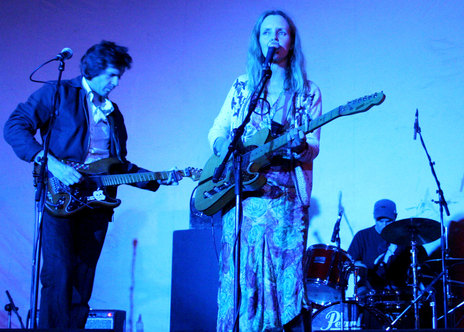
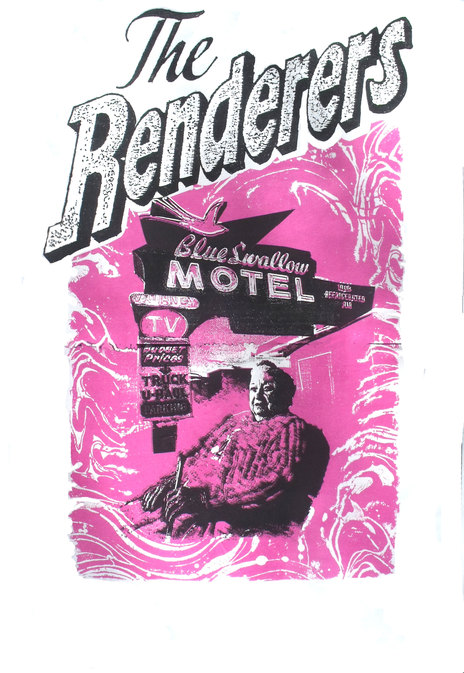
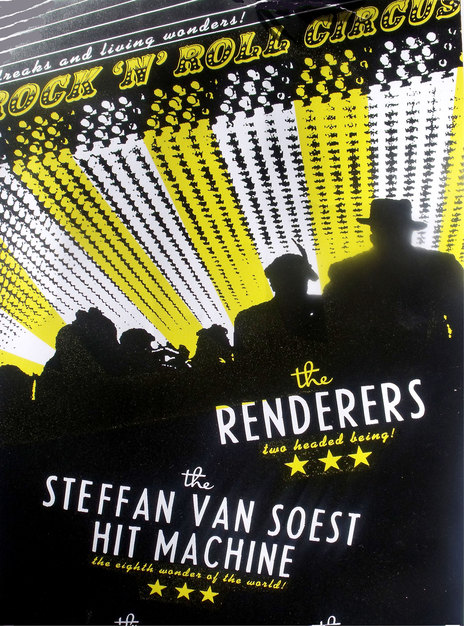
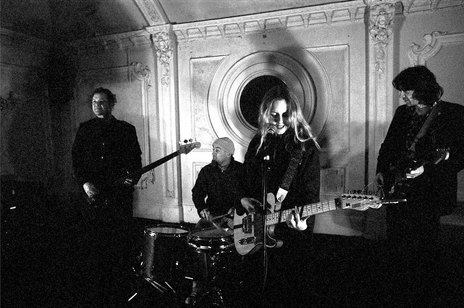
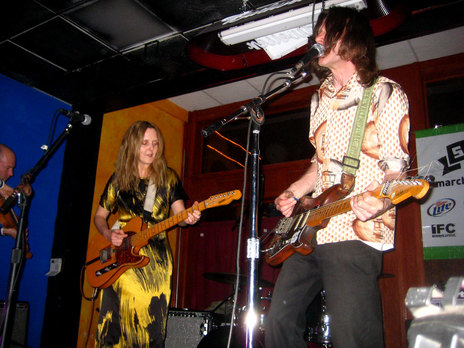
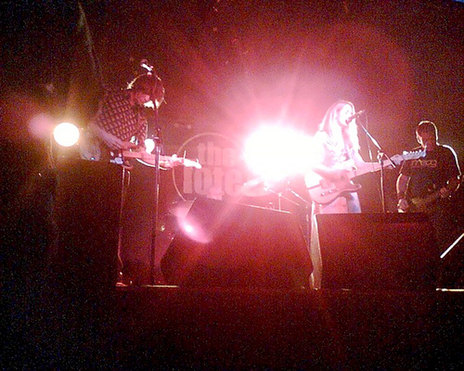
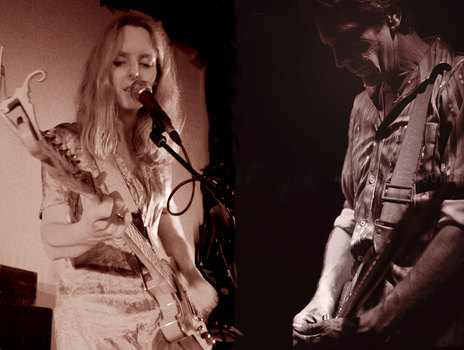
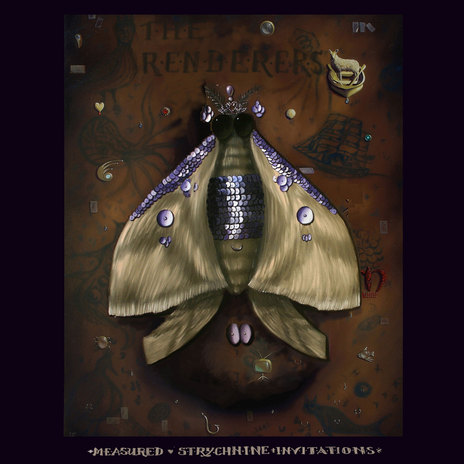
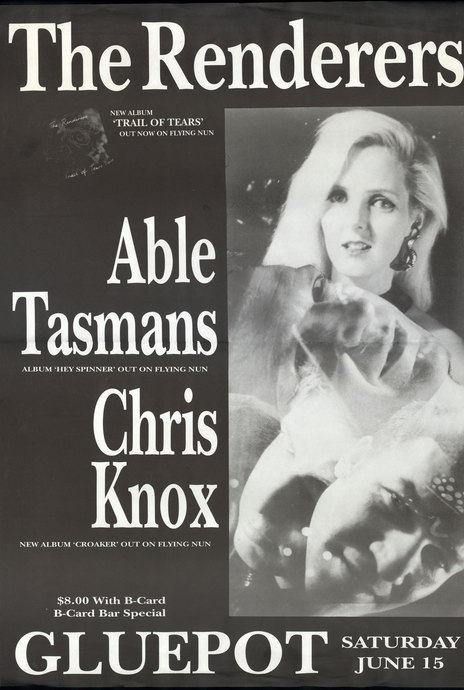
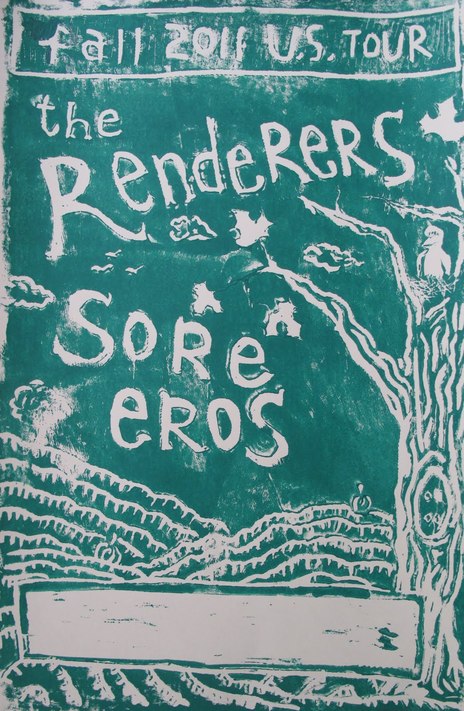
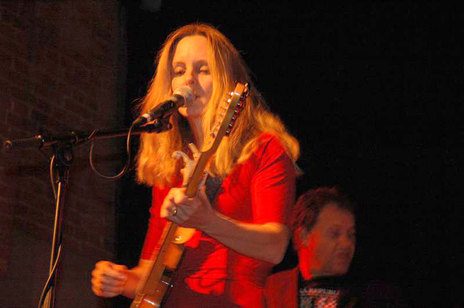
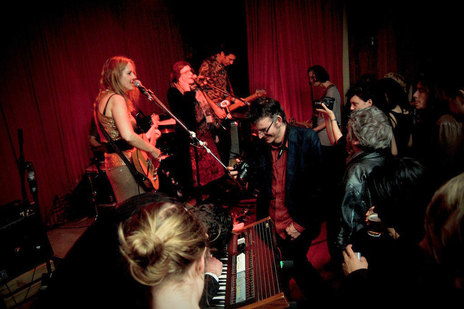
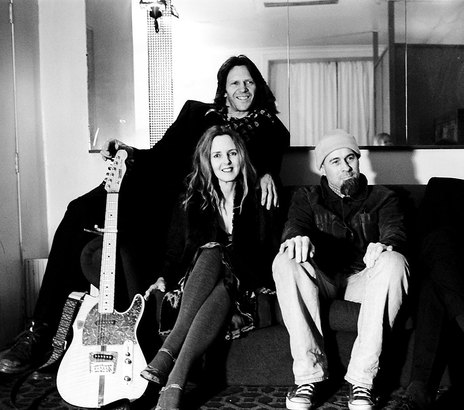
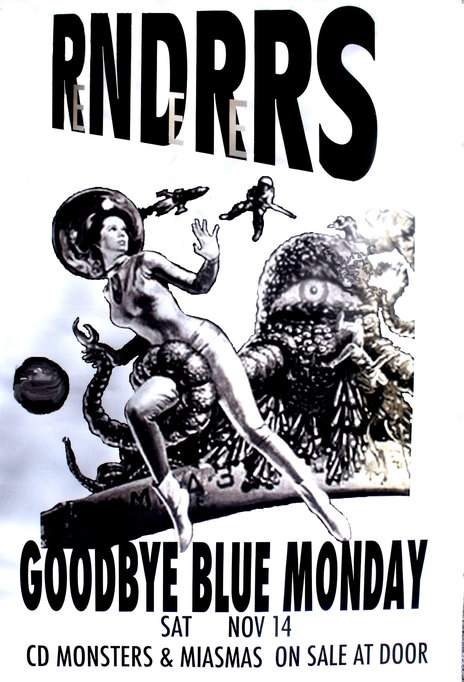
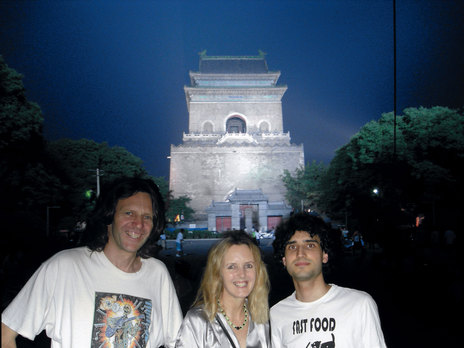
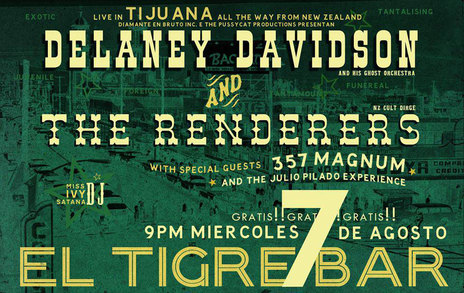
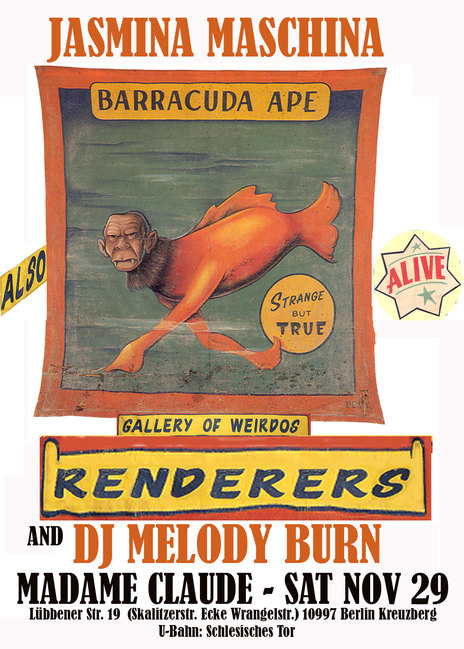
Donna Yuzwalk profiles the Renderers, RIU, July 1991
Brian Crook - guitar
Maryrose Crook - vocals
Hayden Jones - drums
John Billows - bass
Robbie Yeats - drums
Thom Bell - bass
Stefan Neville - drums
Jo Contag - drums
James Kirk - drums
Michael Daly - drums
Joanne Billesdon - drums
Gregg Cairns - drums
John Segovia - slide guitar
Sean O’Reilly - guitar, synthesizer, bass, percussion
Denise Roughan - bass
Shannon O'Brien - bass, electronics
Peter Mitchell - drums
Richard Baker - bass
Visit our sister site
NZ On ScreenMade with funding from
NZ On Air





